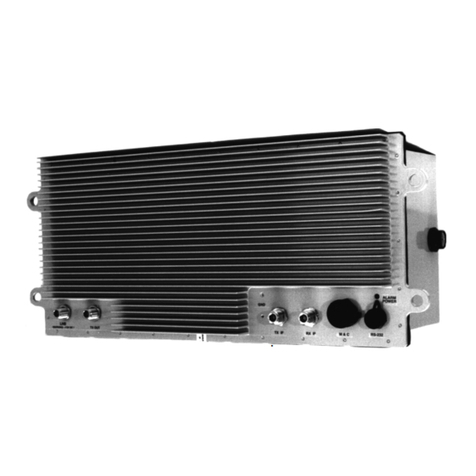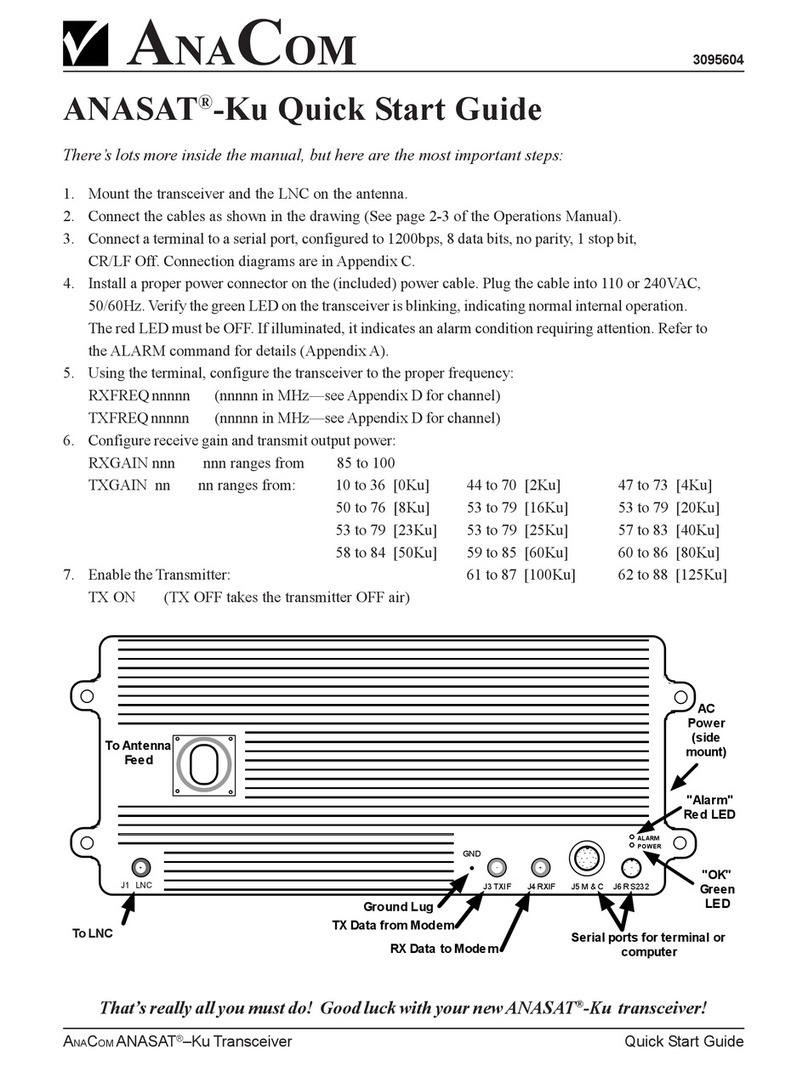
ANACOM 3095604
ANACOM ANASAT®–Ku Transceiver 1-1 Introduction
Section 1. Introduction
The ANASAT®-Ku transceiver upconverts the
modulator’s 70 MHz IF output to an RF signal in the
14 GHz range for transmission, and downconverts
the 12 GHz received RF signal to a 70 MHz IF signal
for use by the demodulator.
The PA uses Internally-Matched Field-Effect
Transistors (IMFET) to achieve highly linear power
and gain with minimal intermodulation distortion
(IMD) products.
High Electron Mobility Transistors (HEMT)
and Gallium-Arsenide Field-Effect Transistors (GaAs
FET) enable the Low-Noise Down-Converter
(LNC) to achieve a noise temperature better than
80ºK.
The transmit (TX) and receive (RX) synthesiz-
ers are locked to an oven controlled, high-stability
crystal oscillator (OCXO) and can provide 1 MHz
frequency selection step sizes over the entire band-
width. TX and RX frequency selection is completely
independent for extra flexibility.
Figure 1-1 The ANASAT®-Ku VSAT transceiver (2W
version shown)
The ANASAT®-Ku VSAT series Ku-band
transceivers are designed for continuous outdoor
duty in all types of environments. Ideally suited for
SCPC, MCPC, and DAMA applications, the ANA-
SAT®-Ku series transceivers transmit in the 14 GHz
frequency range and receive in the 12 GHz range.
The ANASAT®-Ku VSAT transceivers inte-
grate all necessary functions, including the solid-state
power amplifier (PA), into a small, highly integrated
outdoor package. The only cabling required to the
indoor plant are the IF and AC power cables. The
LNC connects to the transceiver with a single co-
axial cable.
Designed to interface with any 70 MHz mo-
dem, the ANASAT®-Ku VSAT transceiver may be
used in a wide variety of communication networks.
The earth stations may be configured in Star, Mesh,
or Ring networks and with the optional Station Man-
agement System (SMS) tied to a PC, you can moni-
tor and control all local transceivers and other net-
work compatible equipment.
Figure 1-2. Another view of the ANASAT®-Ku





























